Type Bronze Created 1876 | Year 1876 | |
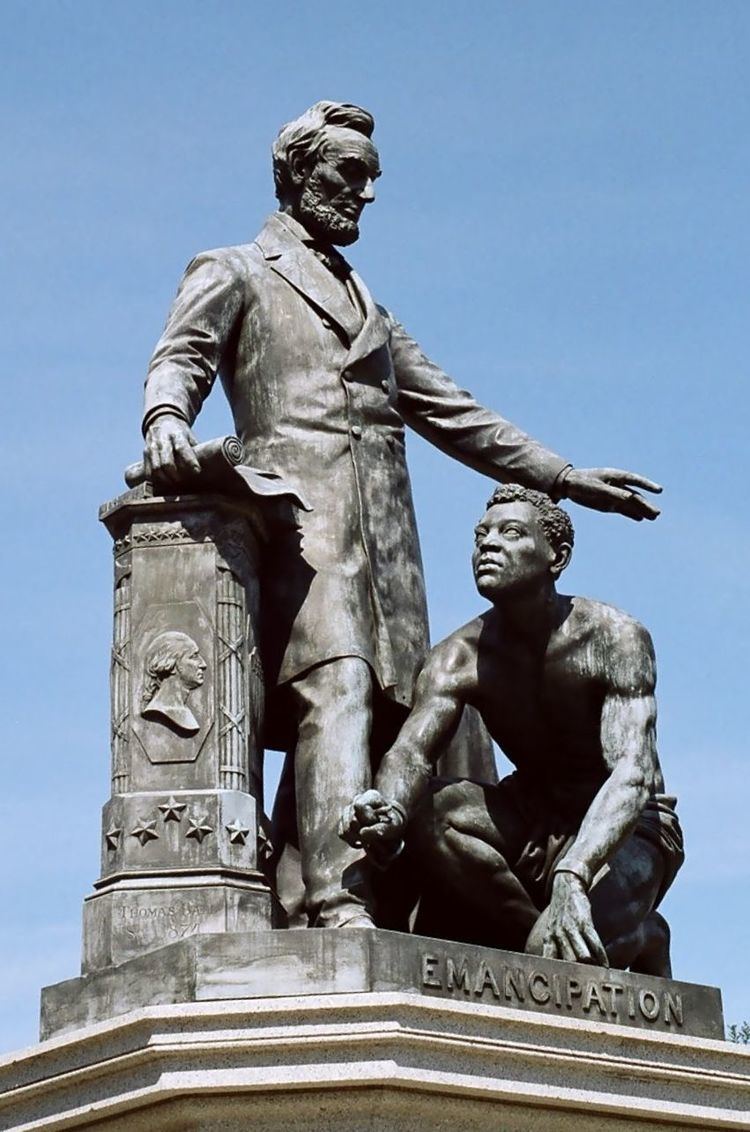 | ||
Similar Lincoln Park, Daniel Webster Memorial, Second Division Memorial, Robert A Taft Memorial, James A Garfield Monument | ||
Emancipation memorial
The Emancipation Memorial, also known as the Freedman’s Memorial or the Emancipation Group, and sometimes referred to as the "Lincoln Memorial" before the more prominent so-named memorial was built, is a monument in Lincoln Park in the Capitol Hill neighborhood of Washington, D.C.
Contents
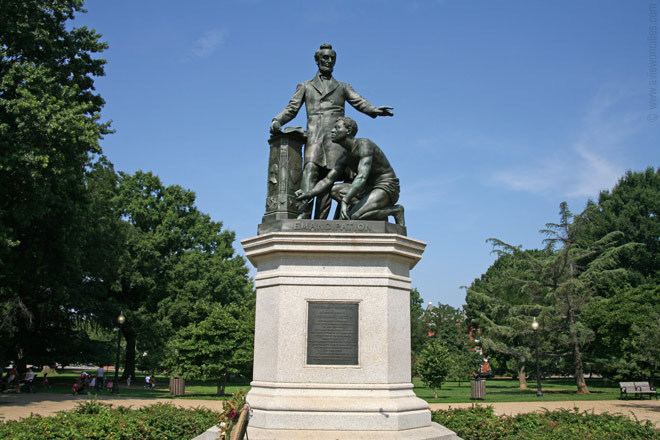
Designed and sculpted by Thomas Ball and erected in 1876, the monument depicts Abraham Lincoln in his role of the "Great Emancipator" freeing a male African American slave modeled on Archer Alexander. The ex-slave is depicted on one knee, with one fist clenched, shirtless and shackled at the president's feet.
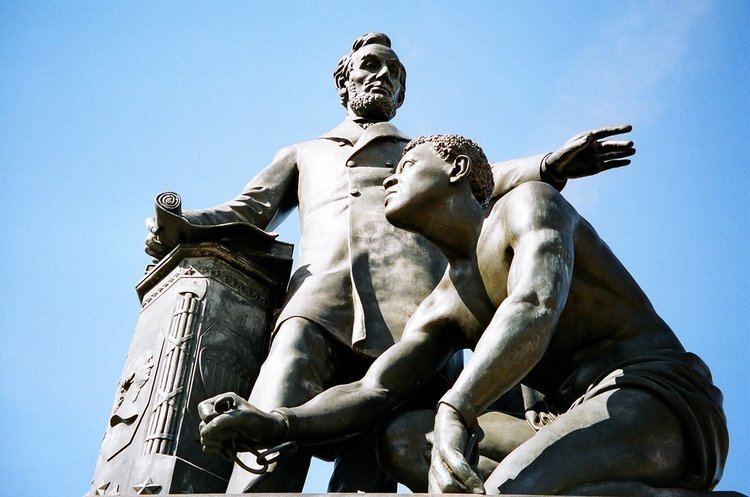
The statue originally faced west towards the U.S. Capitol until it was rotated east in 1974 in order to face the newly-erected Mary McLeod Bethune Memorial.
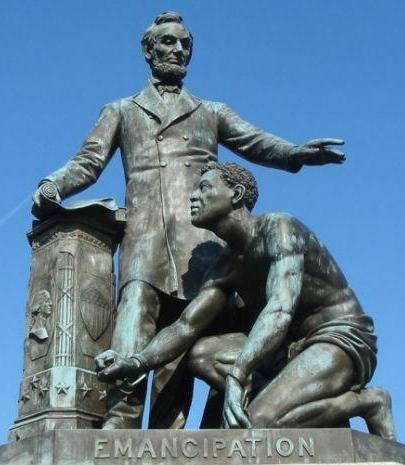
The monument has long been the subject of controversy. According to information from American University:
If there is one slavery monument whose origins are highly political, the Freedman’s memorial is it. The development process for this memorial started immediately after Abraham Lincoln's assassination and ended, appropriately enough, near the end of Reconstruction in 1876. In many ways, it exemplified and reflected the hopes, dreams, striving, and ultimate failures of reconstruction.

Despite being paid for by African Americans, historian Kirk Savage in 1997 condemned it as "a monument entrenched in and perpetuating racist ideology" because of the supplicant and inferior position of the Black figure.
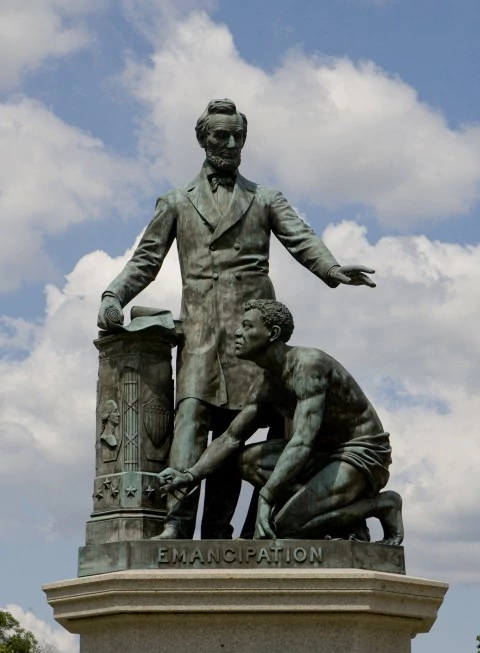
The statue is a contributing monument to the Civil War Monuments in Washington, DC, of the National Register of Historic Places.
Funding
The funding drive for the monument began, according to much-publicized newspaper accounts from the era, with $5 given by former slave Charlotte Scott of Virginia to her former master for the purpose of creating a memorial honoring Lincoln. The Western Sanitary Commission, a St. Louis-based volunteer war-relief agency, joined the effort and raised some $20,000 before announcing a new $50,000 goal.
According to the National Park Service, the monument was paid for solely by free slaves:
The campaign for the Freedmen's Memorial Monument to Abraham Lincoln, as it was to be known, was not the only effort of the time to build a monument to Lincoln; however, as the only one soliciting contributions exclusively from those who had most directly benefited from Lincoln's act of emancipation it had a special appeal...The funds were collected solely from freed slaves (primarily from African American Union veterans)...
The turbulent politics of the reconstruction era affected the fundraising campaign on many levels. The Colored People’s Educational Monument Association headed by Henry Highland Garnet wanted the monument to serve a didactic purpose as a school where freedmen could elevate themselves through learning. Fredrick Douglass disagreed and thought the goal of education was incommensurate with that of remembering Lincoln.
Design and construction
Harriet Hosmer proposed a grander monument than that suggested by Thomas Ball. Her design, which was ultimately deemed too expensive, posed Lincoln atop a tall central pillar flanked by smaller pillars topped with Black Civil War soldiers and other figures.
When Ball's design was finally chosen, the commission insisted on certain changes. Instead of wearing a liberty cap, the slave in the revised monument is depicted bare-headed with tightly curled hair. The face was re-sculpted to look like Archer Alexander, an ex-slave whose life story was popularized by a biography written by William Greenleaf Eliot.
Compared to the original design, in which Lincoln’s hand seems to awaken the slave to his new freedom and to the realization that his shackles are gone, the current memorial is more of an amalgamation of approaches. It is no longer allegorical but realistic. In fact, Lincoln never met Archer Alexander, so it is historically inaccurate. While the original design poses a question — will this slave become a man? — the revision erases that query and instead implies a relationship between two men who never actually knew each other.
In the final design, as in Ball's original design, Lincoln holds a copy of the Emancipation Proclamation in his right hand. The document rests on a plinth bearing patriotic symbols including George Washington's profile, the fasces of the American republic, and a shield emblazoned with the stars and stripes. The plinth replaces the pile of books in Ball's original design. Behind the two figures is a whipping post draped with cloth. A vine growns around the pillory and around the ring where the chain was secured.
The monument was cast in Munich in 1875 and shipped to Washington the following year. Congress accepted the statue as a gift from the "colored citizens of the United States" and appropriated $3,000 for a pedestal upon which it would rest. The statue was erected in Lincoln Park where it still stands.
A plaque on the monument names it as "Freedom's Memorial in grateful memory of Abraham Lincoln" and reads:
This monument was erected by the Western Sanitary Commission of Saint Louis Mo: With funds contributed solely by emancipated citizens of the United States declared free by his proclamation January 1 A.D. 1863. The first contribution of five dollars was made by Charlotte Scott. A freedwoman of Virginia being her first earnings in freedom and consecrated by her suggestion and request on the day she heard of President Lincoln's death to build a monument to his memory
Dedication
Frederick Douglass spoke as the keynote speaker at the dedication service on April 14, 1876, with President Ulysses S. Grant in attendance. John Cromwell, a Howard University historian, who was in the audience, reported that Douglass said the statue "showed the Negro on his knees when a more manly attitude would have been indicative of freedom."
Other versions
In 1879, Moses Kimball, for whom Ball had once worked at the Boston Museum, donated a copy of the statue to Boston. It is sited in Park Square.
Architect Edward Francis Searles purchased an early small demonstration version from Ball and brought it to Methuen, Massachusetts, where it rests in the Town Hall atrium.
